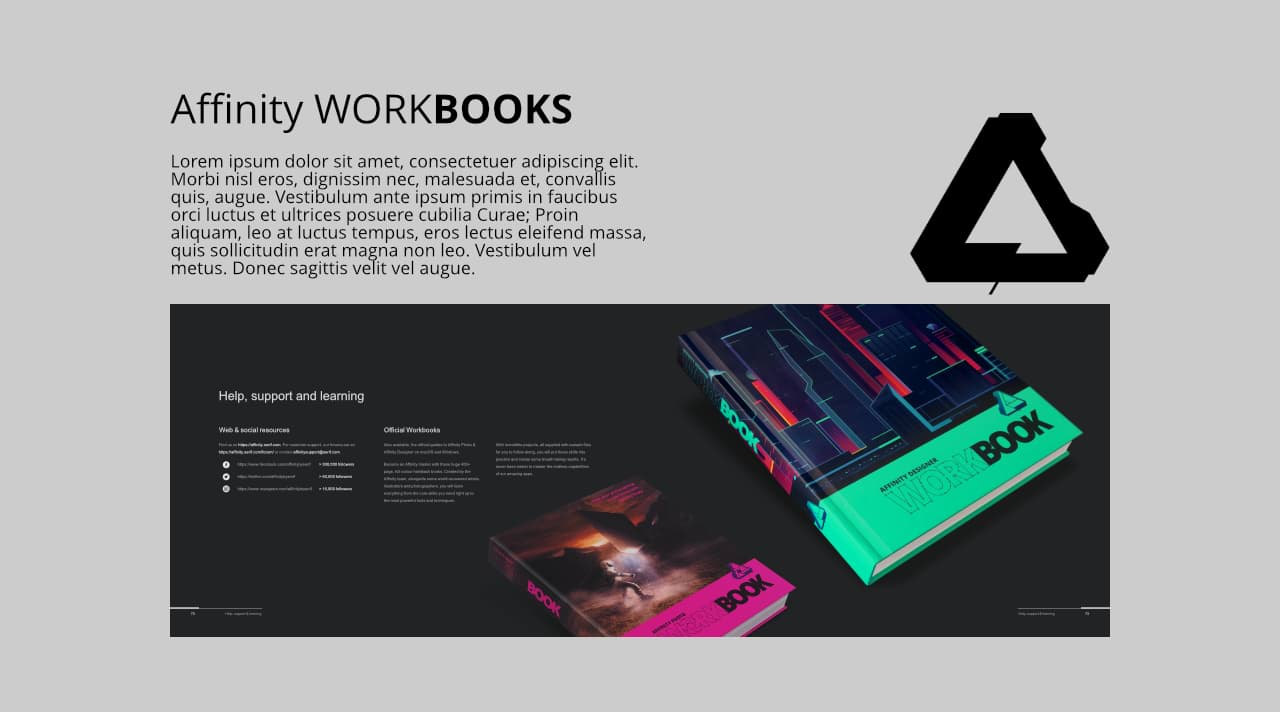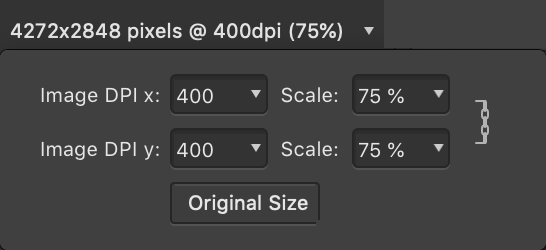Placing content
Placing content allows you to add raster images, as well as Affinity documents, PDFs, and PSDs, to your page to enhance your publication.

Placing content allows you to add raster images, as well as Affinity documents, PDFs, and PSDs, to your page to enhance your publication.

Once you've planned out your publication and added text to text frames, you can place additional content.
Some useful tips when placing content include:
For further information on placing specific file types, please refer to the following table:
| Content type | Comments |
|---|---|
| Affinity Designer files with multiple artboards | You'll be provided with an Artboard option on the document's context toolbar so you can choose which artboard is displayed. |
| Affinity documents, PDFs and PSD files | The file will be listed in the Layers panel as either an Embedded document or Linked document depending on the Image Placement Policy set during initial Document Setup. |
| PSD files | A bitmap representation of the file will be displayed; the file content will not be interpreted. This will generally give better results on output and also negates the requirement to have correct fonts installed. You can still edit the layers of the placed PSD, although if edits are made the file will be interpreted again and its appearance may change (for example, if a font is missing). |
| PDFs, SVGs, PSD and EPS files | If these are placed as embedded documents, you can edit them within Affinity. If edits are made, these files will be converted to Affinity documents and the original data will not be retained; you will not be able to write the embedded file out to its native file format and make it linked. Other features such as using PDF Passthrough will also then be lost. Please note that the Resource Manager will always display the original file's source filename and location should you need to refer back to it. |
| Affinity documents, PDFs, SVGs, PSD and EPS files | If these are placed as linked documents, you will not be able to edit them directly within Affinity. However, any edits made to the files will be picked up by Affinity and will be reported as Modified in the Resource Manager. You can then use the Resource Manager's Update button to update the files to match the external changes that were made. |
| Multi-page Affinity documents, InDesign (IDML) documents or PDFs | You can choose which page or spread you want to display by using Spread on the context toolbar. For PDF, only one page can ever be displayed, although you can simulate a spread by duplicating the placed object and choosing a different page to view. |
| Placed PDFs | These offer a PDF Passthrough option on the context toolbar, which defaults to Passthrough for exact reproduction within your own PDFs. If that's not possible, the Interpret option is selected and the Preflight panel lists the reason(s). A bitmap preview of the PDF’s contents is displayed while editing your document in Affinity Publisher. |
| Microsoft Excel Workbook spreadsheets (XLSX) | These can be placed directly in Publisher as tables. When placing, click on the page (instead of dragging) to preserve the original appearance of the file. |
Once added to your page, you have the option to replace the content, retaining its position, as well as edit placed content.

1 Multi-page Freehand files open with each page concatenated onto a single page. Add file extensions .fh10 or .fh11 in Finder to import. Text import is not supported.
2 Raw images are processed automatically.
3 Supports transparency.